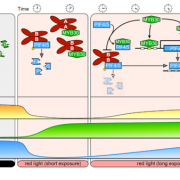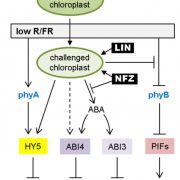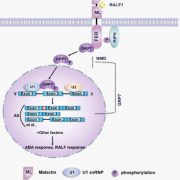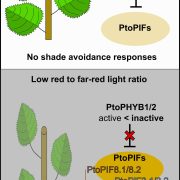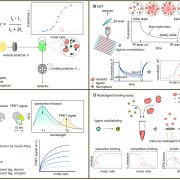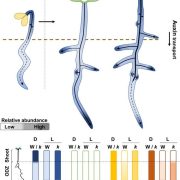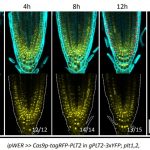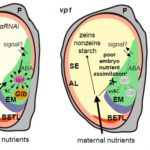Arabidopsis PP6 phosphatases dephosphorylate PIF proteins to repress photomorphogenesis (PNAS)
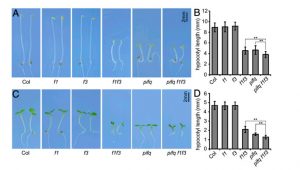 In the absence of light, plants undergo skotomorphogenesis, characterized by longer hypocotyls, closed and yellowish cotyledons, and apical hooks. in the presence of light, they undergo photomorphogenesis, with inhibited hypocotyl elongation, and open and expanded green cotyledons. Light also modulates directional growth, shade avoidance, and photoperiodic flowering. One of the most important photoreceptors that perceives and responds to the red and far-red light spectrum is the phytochrome family and some of the pivotal interacting partners are PHYTOCHROME INTERACTING FACTORs (PIFs), which repress photomorphogenesis in the dark. Thair stability is controlled by phosphorylation. Although the kinases responsible for PIF phosphorylation have been extensively described, the phosphatases remain unknown. Yu et al. characterized the function of two genes encoding conserved catalytic subunits of protein phosphatase 6 (PP6). PP6 phosphatases and PIFs function synergistically to repress photomorphogenesis in the dark, moreover the transcriptional regulatory activities of PIFs are dependent on PP6. The data show that PP6 functions as the phosphatase that dephosphorylates PIF3 and PIF4 and regulates photomorphogenesis in Arabidopsis, providing new insights into the light signaling network. (Summarized by Francesca Resentini) PNAS 10.1073/pnas.1907540116
In the absence of light, plants undergo skotomorphogenesis, characterized by longer hypocotyls, closed and yellowish cotyledons, and apical hooks. in the presence of light, they undergo photomorphogenesis, with inhibited hypocotyl elongation, and open and expanded green cotyledons. Light also modulates directional growth, shade avoidance, and photoperiodic flowering. One of the most important photoreceptors that perceives and responds to the red and far-red light spectrum is the phytochrome family and some of the pivotal interacting partners are PHYTOCHROME INTERACTING FACTORs (PIFs), which repress photomorphogenesis in the dark. Thair stability is controlled by phosphorylation. Although the kinases responsible for PIF phosphorylation have been extensively described, the phosphatases remain unknown. Yu et al. characterized the function of two genes encoding conserved catalytic subunits of protein phosphatase 6 (PP6). PP6 phosphatases and PIFs function synergistically to repress photomorphogenesis in the dark, moreover the transcriptional regulatory activities of PIFs are dependent on PP6. The data show that PP6 functions as the phosphatase that dephosphorylates PIF3 and PIF4 and regulates photomorphogenesis in Arabidopsis, providing new insights into the light signaling network. (Summarized by Francesca Resentini) PNAS 10.1073/pnas.1907540116


